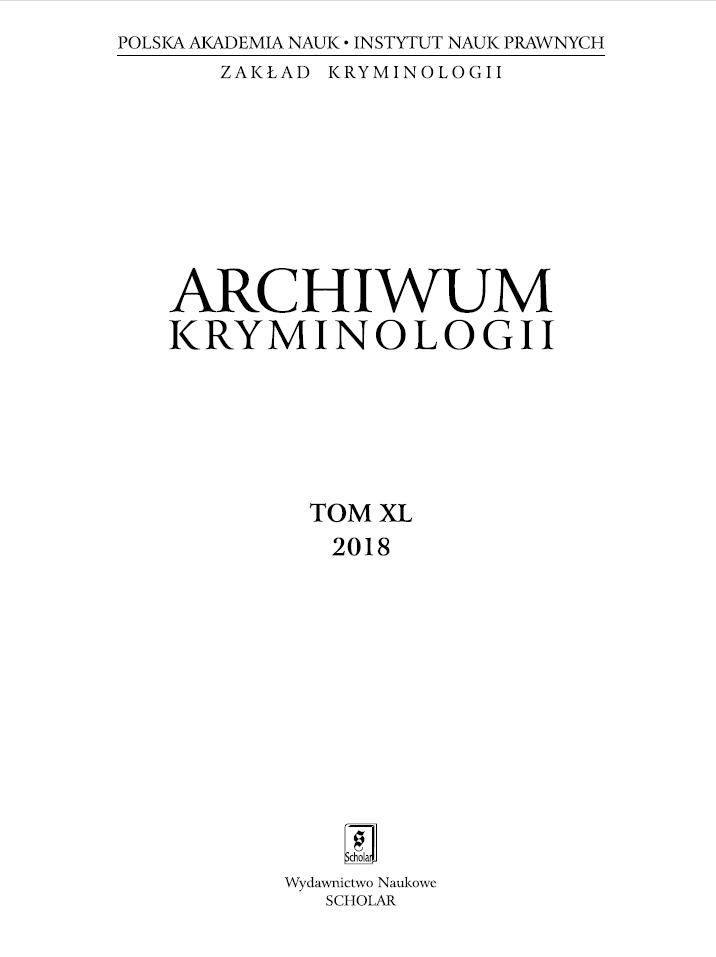Leon Wachholz, zapomniany polski kryminolog
Leon Wachholz: The Forgotten Polish Criminologist
Author(s): Jan WidackiSubject(s): History, Criminal Law
Published by: Instytut Nauk Prawnych PAN
Keywords: history of criminology; criminology in Poland; Leon Wachholz
Summary/Abstract: Leon Wachholz (1867-1942) was a professor of forensic medicine at the JagiellonianUniversity, Cracow (Poland).He made his way into the history of forensic sciences as an eminent specialistin forensic medicine, promoter of experimental methods and a teacher of a wholegeneration of Polish professors of forensic medicine. He tutored professors: Jan Ol -brycht (Cracow), Włodzimierz Sieradzki (Lwów), Stefan Horoszkiewicz (Poznań), andwrote the first modern Polish handbook of forensic medicine, published in Cracowin 1899.Leon Wachholz was also a historian of medicine, the author of many interestingarticles in the field, whereas his scientific achievements in the field of criminology,although attractive and valuable, now remain practically unknown.Nevertheless, in the late 19th and early 20th centuries, it was typical of forensicmedicine professors to deal with criminology. Those who did include pioneers of contemporary criminology, to mention for example Cesare Lombroso in Italy or Alexand reLacassange in France. Therefore, Wachholz’s interest in criminology was natural forhis time.Wachholz’s first work in criminology was the higher doctorate (“habilitation”)lecture O obłędzie moralnym z punktu widzenia antropologii kryminalnej (“On moralinsanity from the point of view of criminal anthropology”), published in 1894.His most valuable contributions to criminology include Wojna a zbrodnia (“Warand crime”), published in 1922 in Poland and Germany, and Alkoholizm a przestępstwo(“Alcoholism and crime”), published in 1927.Other notable works in criminology, more exactly in forensic sexuology, includedO przewrotnym popędzie płciowym (“On perversive sexual drive”), published in 1892,and O morderstwie z lubieżności (“Murder motivated by sex”, in German: “Der Lustmord”),published in 1900.Both above-mentioned works show a visible influence of Richard von Krafft-Ebing(author of the famous Psychopathia sexualis), in whose Viennese clinic Wachholz heldan internship immediately after graduation.Wachholz’s point of view on the aetiology of crime was expressed in the bookMedycyna kryminalna (“Medicine for investigators”) written together with Professor Jan Olbrycht, as well as in the extensive eulogy published after the death of CesareLombroso (1910).Wachholz’s works in criminology prove that the his view on the aetiology of crimeand the criminal gradually evolved. Why do people commit crime and acts of violence?As far as he seemed to follow the individual (anthropological, biological aspects,like Cesare Lombroso or Richard von Krafft-Ebing), in his later works he appreciatedthe impact of social factors on crime (e.g. Alexandre Lacassange, Gabriel Tarde or Franzvon Liszt). Ultimately, his views placed him among positivists-multicausalists such asEnrico Ferri. Later, in the early 1930s, having read Johann Lange and Heinrich Kranzon the criminality of twins, he remained within the realm of multicausality, yet wasready to recognise the biological, individual element as dominant.Towards the end of his life, in 1937, Wachholz formulated his original theoryof criminality, which he called “The Right of Contrast” (in Polish: prawo kontrastu).Making some reference to metaphysics and categories of “good” and “evil”, he divergedfrom the fundamental foundations of positivism, which he had followed nearly for allhis scientific life.
Journal: Archiwum Kryminologii
- Issue Year: 2018
- Issue No: XL
- Page Range: 523-534
- Page Count: 12
- Language: Polish

